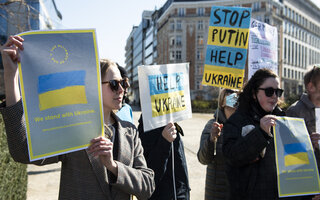Autoren
Erscheinungsdatum
JEL Classification
Schlagworte
Geldpolitik
Internationaler Handel
Europäische Union & Euro
Europa
When, about twenty years ago, the Euro was created, one objective was to facilitate intra‐European trade by reducing transaction costs. Has the Euro delivered? Using sectoral trade data from 1995 to 2014 and applying structural gravity modeling, we conduct an ex post evaluation of the European Monetary Union (EMU). In aggregate data, we find a significant average trade effect for goods of almost 8 percent, but a much smaller effect for services trade. Digging deeper, we detect substantial heterogeneity between sectors, as well as between and within country‐pairs. Singling out Germany, and embedding the estimation results into a quantitative general equilibrium model of world trade, we find that EMU has increased real incomes in all EMU countries, albeit at different rates. E.g., incomes have increased by 0.3, 0.6, and 2.1 percent in Italy, Germany, and Luxembourg, respectively.







